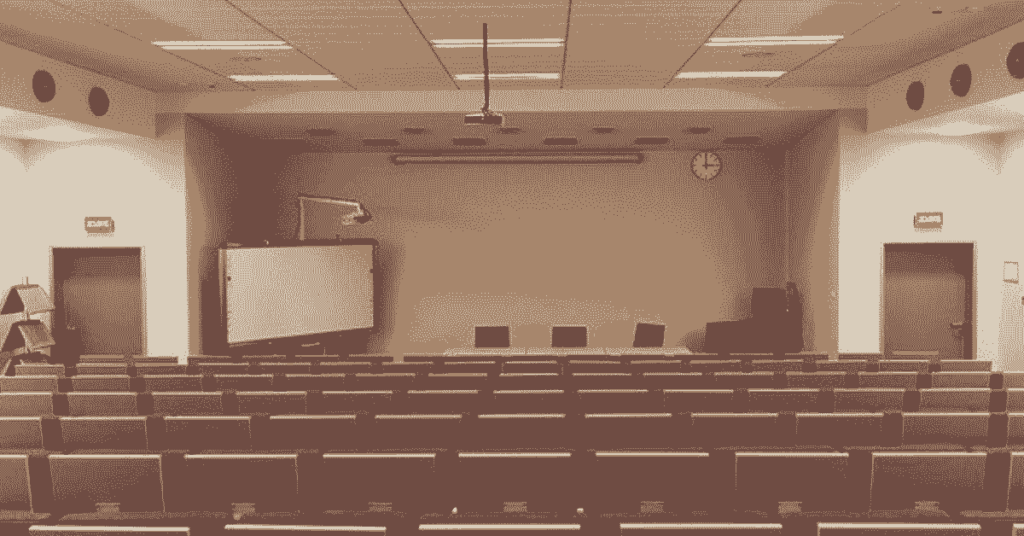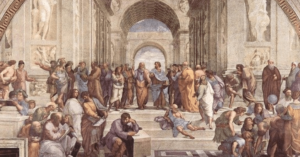1. Introduction: In a natural environment, the components interact with each other in an informal and unorganized manner leading to unpredictable or unspecified learning.
2. Instructions: In a controlled environment with predefined learning objectives, governed under a set of clearly defined instructions (guidelines or set of directives for performing activities or following procedures to achieve a predefined goal) can help us lead to attaining predictable learning outcomes. By instructions, we mean, directed teaching efforts (to build an organized learning process i.e. controlled environment) of the teacher to impart the required knowledge and experiences to the learners. Teaching and Instruction as terms could be found being used interchangeably but Instruction is more apt when it comes to defining the directed learning process.
3. Instructional System: Components inter-operating to deliver a desired function predictably, repeatedly and consistently in terms of the outcomes and performance is called a system. By Instructional System, it means components like learning process objectives, planning, implementation and testing of the learning outcomes. Instructions coded (automated or manually) when followed, guide the human interactions with an organized environment to achieve certain objectives (or behavioral changes). In other words, students following the instructions would undergo behavioral changes (difference between entry behaviors and terminal behaviors). They are expected to achieve certain terminal behaviors (expected terminal behaviors). The difference between actual and expected terminal behaviors is a measure of effectiveness of the learning process and such a measurement serves the purpose of providing the feedback.
4. Instructional Systems (IS) Design (ISD): ISD is a four stage design process : [A] Objectivizing (objectives are specified in terms of set of learning outcomes in the direction of overall goal/education/IS and an instructor or designer identifies the objectives needed to develop the procedures for the IS i.e. what needs to be achieved at the end of the teaching or learning process as an outcome i.e. terminal behaviors/change), [B] Planning, [C] Implementing & [D] Testing.
[B] Planning and Implementing stages put together constitute the core part of the process (also referred collectively as “designing the system” ). Planning (also referred as “analyzing the system requirements”) involves having understood the objectives, arriving at alternative or all possible paths or educational methods or means or procedures (with known merits, demerits, limitations or constraints) to achieve these identified objectives and designated resources needed for these alternative paths or solutions, in order to choose or select the best possible alternative as a learning process or solution (given the set objectives). It needs collective information about the potential alternative or solutions or methods and their merits and demerits and resources (attached costs) etc. It needs to consider the controlled learning environment and various variables that can impact its performance – (i) content that needs to meet the learning goal or outcomes (ii) facilities, materials, human activities and efforts, equipment, media, ICT etc. that needs to put/keep the learning environment in motion/operation (iii) factors as constraints related to time, autonomy of learner/teacher, cost etc. leading to trade-offs and related decisions (iv) learner characteristics or persona, number of learners, groups, entry behaviors, prior knowledge or academics, experience, personal and professional backgrounds, aspirations, learning style, studying skills and ability or learning rate etc.). Objectives and resources must get identified before designing or implementing the IS.
[C] Implementation (also referred in nutshell as “designing the IS”) comes after objectives, procedures and resources needed are clearly identified. The design of IS must be instructive. IS designed should have inter-operative components working effectively (assisting each other) for the achievement of learning outcomes, objectives and eventual goal. It (IS Designed) should also operate with compatibilities with other IS external to the environment. It puts the plan into action to deliver the IS that can be used to execute multiple iterations of the learning process. Reviewing the implementation as per the plan (selected or chosen solution) is the responsibility of the designer or instructor. Designer or reviewer has to check whether each of the set objectives are met by the IS being planned and implemented (designed) or not, at each phase of the designing (planning and implementation) process .
ISD process improves the quality of the instructions by addressing various assumptions inherent in the instruction system – (i) no two learners are alike (entry behaviors are different – prior knowledge/experience, learning style, level of motivation, learning ability or rate etc., ). (ii) each educational method or procedure has its own set of merits and demerits or defects i.e. they differ in terms of their what objectives they can help achieve/deliver. In other words, level of objectives define what educational methods to be selected to build an instructional system. (iii) pre-requisites and practice (in case of a complex learning process or activities for higher learning objectives or outcomes) can help increase the level of motivation and prevent from degrading or lowering the learning objectives. (iv) exposing learners to wide range of subjects, ideas, attitudes etc., should not be construed as equivalent to delivering relevant content and related skills and competencies. In other words, the act of increasing the quantity does not necessarily means, it is a substitute for increasing the quality of the learning process. In other words, simply adding more resources or components in the system does not mean it will yield more or better outcomes.
Designing or implementing IS needs to incorporate leaner’s characteristics and instructional media, techniques and materials available for them for in classroom or face to face or self learning environments – (i) individual differences (ii) readiness (iii) motivation and (iv) study conditions.
Based on the learner characteristics, learner support systems have to be designed.
In terms of instructional techniques and media, these are primarily of four types (i) Leaner centered – personalized systems of instructions, flexi-study, distance learning, progammed learning, computer assisted learning and individual projects (ii) group centered – tutorial, seminar, group discussion, group project (iii) teacher centered – lecture method, demonstration method and (iv) experience centered – discovery learning, learner centered instructions, simulation techniques, role play and case study techniques.
[D] Testing (also referred as ” evaluating IS effectiveness” tests whether the IS meets the set objectives for it or not. It measures the benefits delivered as against the expectation and provides feedback for continuous improvement and development or evolution of IS, as and when this is put to use or operation. This phase or stage provides the scope of developmental corrections. No system component to be modified without proper explanation and understanding of the test data or results (i.e. after analyzing the effect of the changes or modifications on the underlying components of the system). Evaluation is not just learner’s evaluation. It is an evaluation of IS itself every time teacher and learners undergo the implementation of the designed IS process for them. It is (a) continuous – time sensitive (b) goal directed and (c) adequate data and measurement instruction driven. It evaluates the process in terms of the outcomes it delivered and takes the feedback of teacher and learner into consideration based on which revision is made to the IS if needed. Learner evaluation is continuous in the sense it has (i) intext questions, self-check questions and exercises etc (ii) assignment questions with teacher feedback (tutor marked assignments or TMA) or automated feedback (computer marked assignments or CMA). Learner evaluation is goal directed i.e. terminal evaluation (Term End Examinations) to see how they have achieved the goals. These achievements are reflected in the Grades assigned to them based on the continuous evaluation and terminal evaluation (term end examination).
5. Characteristics of ISD: (i) learning outcomes in terms of learner’s (observable) performance (ii) selective stimulus and learning situations arranged for the learners (not limited to just a teacher driven learning situations and stimulus i.e. it could involve the right use of learning Media/ICT, books, texts, television, excursion, etc.,) (iii) specific conditions under which the learner’s responses or performance to be observed (iv) specific criteria for an acceptable performance (v) modifications in the specific conditions if the learner’s response does not correspond to the specified outcomes. In short, characteristics of ISD are (a) planned elements i.e. instructions, instruments and procedures, (b) inter-dependent arrangement of these elements and (c) learning goals/direction/functions/outcomes (expected terminal behaviors, skills etc.).
6. Designing Instructional Systems: Designing an IS means taking following steps as explained above: (i) understanding IS needs and objectives (ii) planning IS i.e. analyzing the IS requirements (iii) implementing IS i.e. designing the IS (iii) testing i.e. evaluating IS effectiveness.




